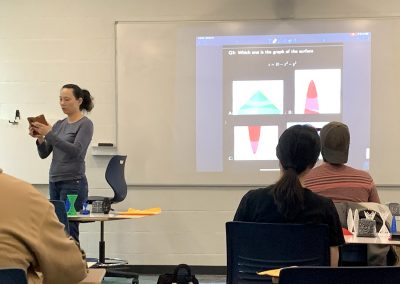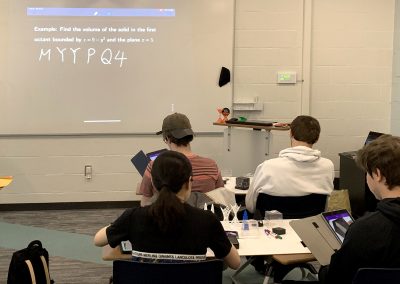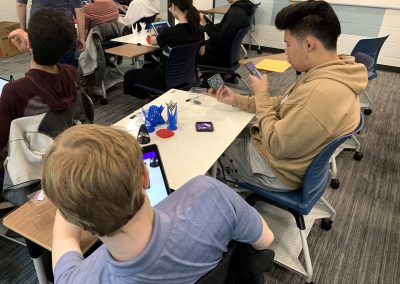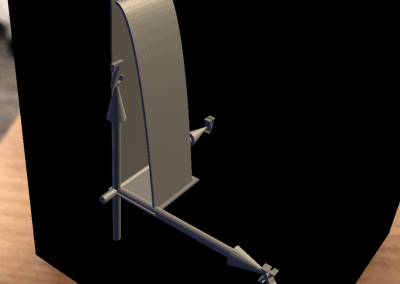MATH 230:
Merging 3D Modeling ResourcesVisualizing Complex Equations
MATH 230 is the third and final course in the sequence of calculus courses. In the first year of their calculus studies, students learn concepts of differentiation and integration for functions with a single independent variable. MATH 230 is a course covering calculus computations involving 2 or more variables at the same time, a topic commonly called multivariable calculus. An intuitive and manipulative working knowledge of multivariable calculus is indispensable for electrostatics, fluid dynamics, solid mechanics, and many other fields of science and engineering that involve both space and time.
The differential calculus portion of the course includes the concepts of partial derivatives, gradients, divergence, and curl, multi-variable chain rule, coordinate system transformations, and differential equations, with applications to geometry and optimization. The integral calculus portion includes multiple integrals, line integrals and surface integrals, and generalizations of the fundamental theorem of calculus including Green’s theorem, Stokes’s theorem, and the divergence theorem.
In Week Eight, students were given the option of working with 3D models, both printed and in digital form via Augmented Reality during their Derivatives and Integrals of Vector Functions lesson.
Assignment in Brief
Course: MATH 230 (Multivariable Calculus)
Instructor: Lin Kuei-Nuan
Number of Students: 17
Semester: Fall 2019
Duration of Assignment: 16 weeks
Key Benefits
By adding Augmented Reality to this lesson, students were able to visualize the 3D models that have previously only been physical objects in new ways. Through the MERGE Cube and its corresponding app for campus-provided iPads and students’ mobile phones, models could be manipulated infinitely in two different views. Additionally, less plastic will need to be created each semester by 3D printing new models to replace the more fragile ones that can be damaged in the course of regular handling and storage.
Application to Other Courses
This course is usually completed by students with majors in engineering programs, mathematics, sciences and secondary education. The class activity familiarizes students not only with the spatial problem solving skills that will be foundational for advanced courses in covering theory, but also technologies that will be increasingly present in their fields of employment.
Technology
- 3D Printing
- 3D Modeling
- Augmented Reality
- Mobile Devices
Skills
- Spatial problem solving
- Differentiation
- Visualization
Target Skills
- Partnered collaboration
- Technological fluidity
- Sharing findings with peers
(Instructor’s) Lessons Learned
“Most of the students like the [MERGE C]ubes. Some would just use the 3D prints instead of cubes because they still cannot imagine the surface to draw them properly on paper if they use cubes. There is a magic of real 3D prints on hand helping them draw better on paper. I do not see that from AR cubes much.
I have equations associated with the STL file loaded on the cube, they still confuse with orientations of x, y, z when they draw on the paper. The positive part is that they get to see the boundaries are rectangles or circular by flipping around the AR cubes. So they are able to choose the correct way to approach problem-solving.
Another difficulty is that if I do not give them any 3D prints or cubes, they cannot associate equations with surfaces which is what happens in exams. Maybe next semester, we start with AR cubes at the beginning of the semester and spend a decent among of time focusing on associate equations with the shape and orientation of the surfaces.”




